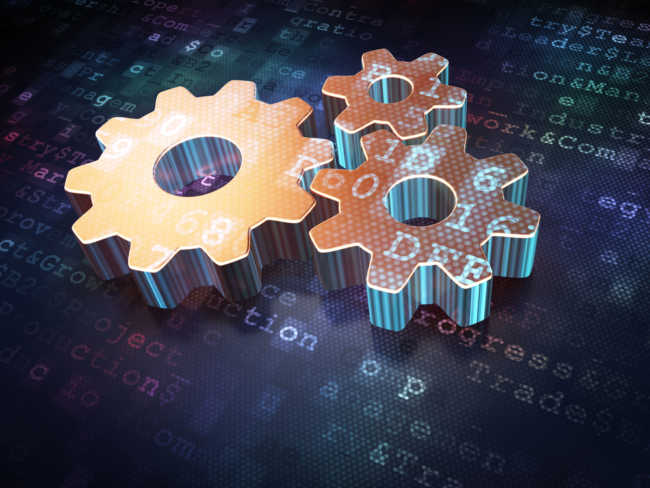Industry 4.0 will more than anything else be a “data revolution”
Prior to taking important financial decisions, it is common practice to investigate current tools and make some calculations to find out alternatives with the best returns on investment. Though deep analyses are not always made, fundamental economic indicators such as exchange, interest and inflation rates are taken into account at the least. When it comes to decide where money shall be allocated, it’s natural to assume that similar goes for engineers and line managers regarding production and equipment investment decisions. However to a surprising degree, things roll differently in real life.
Fundamental performance indicators of the manufacturing environment such as total equipment effectiveness, unit costs, operational expenses still don’t get the deserved attention in the industry which has gone through three well defined revolutions. Among all the effort put forth to achieve daily production targets, managers find it hard to reserve some time to look at manufacturing systems from a vantage point. Widely used industrial idioms like “saving the day”, “production pressure” and “operational blindness” are indeed expressions of reproach aimed at insufficient managerial styles which fail to locate data at the centre. Industry 4.0 or Industrial Internet of Things defining the fourth industrial revolution steps up to cure exactly these types of flaws and place management on data centric and scientific foundations. Thus it can be said that Industry 4.0 will more than anything else be a “data revolution”.
Creating computerized systems with logical control units doesn’t necessarily mean producing smartly either. Research shows that line managers spend 80% of their time for data gathering from the field. When managerial routines, paperwork – and short breaks of course – are substracted from the remaining 20%, it’s not hard to figure out how much productive time is allocated for actual analyses of the gathered data. If data is not to be analyzed, the sole aim for such action could naturally be to have a pillar upon which to take instantaneous operational decisions; which, without comparisons against historic data and trend analyses would only resemble trying to find your way in a dark tunnel with a flashlight.
Any commercial entity, whether in manufacturing or not, can be thought of as a value chain comprised of different processes. In markets full of uncertainties outside of their influence, if companies are not fully aware of their own KPI’s, it goes without saying that survival will depend on coincidence. While seeing the value chain is as strong as its weakest link and that outputs of certain business processes are inputs for others, it’s in the general interest of managers to take educated decisions that rely on actionable data.
The world of mathematical formulas, algorithms and statistical analyses called Big Data offer added value for all business processes from purchasing to logistics, manufacturing and maintenance to marketing and quality assurance. Smart Manufacturing, at its roots is no more than applying Big Data analytics to manufacturing parameters and KPI’s. All variables of importance which are tracked periodically must be a focal point for smart manufacturing applications. If the end goal for any field project is to increase efficiency, cut down costs or produce more of higher quality products in a given amount of time, then Industry 4.0 shall be viewed from this perspective. Especially in asset-intensive sectors like energy, mining, transportation, metals, glass, steel and electronics, it is of extreme importance to constantly monitor the effectiveness of resource usages.
During all the years when embedded systems got continuously smaller while processing powers increased geometrically, sensor technology followed a comparatively static path of innovation until now. Sensors with built-in processors and logic circuits make raw data gathered from “nodes and edge devices” to be turned into actionable information away from centralized systems and enable smart manufacturing applications much more easily. Meanwhile, simple sensors have long become staples affordable for all. For these reasons, even the smallest of manufacturing units have the opportunity to install instantaneous data gathering networks with full field coverage.

Relatively new concepts like 3D printers, collaborative robots and lights-out manufacturing are frequently highlighted in the scope of Industry 4.0. Though offering substantial benefits, they are merely new manufacturing techniques. Smart manufacturing on the other hand, shall be conceived as a management philosophy encompassing all modes of manufacturing, solidified by the information technologies that make it a reality. Whichever technology and sector is of concern, the most obvious benefit of it will be the fact that not only machines but also humans will start to work more efficiently.
This article was written by Can Baran Unal. He is an independent Industry 4.0 consultant based in Istanbul, Turkey. He guides industrial firms on their path to Industry 4.0 and digital transformation by trainings, strategic roadmapping, creating real life use-cases and building smart processes. He has worked in metals, glass, chemicals and white goods industries for more than a decade, holding managerial and engineering roles in production, maintenance and quality functions, contributed to several investments and improvement projects. Originally this article was published here.



